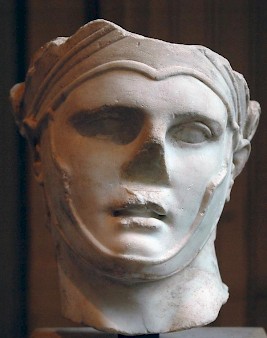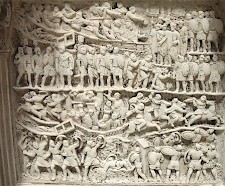Seleucia on the Tigris
Q1136681Seleucia on the Tigris: one of the residences of the Seleucid Empire, modern Tell Umar, on the west bank of the Tigris. The city is not to be confused with the royal residence named Seleucia in Pieria, or the little known Seleucia on the Euphrates.

Seleucia was founded by Seleucus I Nicator, one of the Successors of the Macedonian conqueror Alexander the Great.note The date of the founding is not recorded, but must be after the Babylonian War (311-309) and before 301, when Seleucus visited Babylonia for the last time. The years 308-304 were devoted to Seleucus' eastern campaigns, so it can only have been in the second half of 309 and 304-301.
It was explictly designated as the capital of the empire (āl šarrūti in cuneiform sources, "city of kingship"). The city was opposite the ancient city of Opis at the confluence of the river Tigris and the Royal Canal, which connected the new city to the Euphrates. The ruins have been identified at Tell Umar, about 30 km south of Baghdad, and 60 north of Babylon, which appears to have lost some of its citizens to the new city.note
Excavations have shown that the city was built according to a gridiron plan. As it was a Seleucid city, there will have been the usual, straight main street, perhaps decorated with colonnades. The course of the walls will have been determined by the shape of the site - Pliny the Elder compares the plan of the walls of Seleucia "is like an eagle spreading its wings".note A canal separated the official residence from the living quarters, where people were - according to a Babylonian custom - buried inside their homes. The agora has not yet been identified; the theater may have been on the southern edge of the city.
According to Pliny, the city had 600,000 inhabitants.note This may, for once, be not exaggerated: Babylonia is extremely fertile and it was easy to bring food to the city. Baghdad was to have millions of inhabitants, which had to be fed from the same resources, using the same technology.
The city was an important center of Greek civilization. Strabo mentions an astronomer named Seleucus, and adds that he was educated in the Babylonian traditions of stellar science (a "Chaldaean");note he also mentions a Stoic philosopher named Diogenes,note who was - interestingly - of native Babylonian descent.note According to Plutarch, the rhetor Amphicrates believed he could find a worthy position in Seleucia, was offered one, but in the end refused it, comparing the city to a stewpan.note Perhaps this is a reference to the climate.
The city was conquered in 141 BCE by the Parthian king Mithradates I the Great (r.165-132), who continued to use the city as one of the mints. The new rulers added a new city, Ctesiphon, on the east bank. Pliny claims that in his age, the city still had some Macedonian customs.note Other ethnic groups were the Greeks, the Babylonians, and a large group of Jews, which fled to the city after 35 CE, and was massacred.note
The twin cities were captured several times by the Romans. The emperor Trajan took them in 116, general Avidius Cassius during Lucius Verus' Parthian campaign.note This may have been the end of Seleucia, and it is slightly ironical that the Roman general, Avidius Cassius, was a descendant of its founder, Seleucus Nicator.

Ctesiphon survived, and probably Seleucia too, although it may have been in decline. Septimius Severus targeted the twin city in the winter of 198/199, finding Seleucia abandoned.note The escaping soldiers are shown on Severus' triumphal arch on the Forum Romanum. In the third century, the city was renamed Veh-Ardašir ("the good city of Ardašir") by the Sasanians. When Carus captured Seleucia and Ctesiphon in 283, this was still an important victory.note
In the fifth century, Seleucia was an important center of Nestorian Christianity; the Nestorian teachings were defined during the ecclesiastical council of 468.